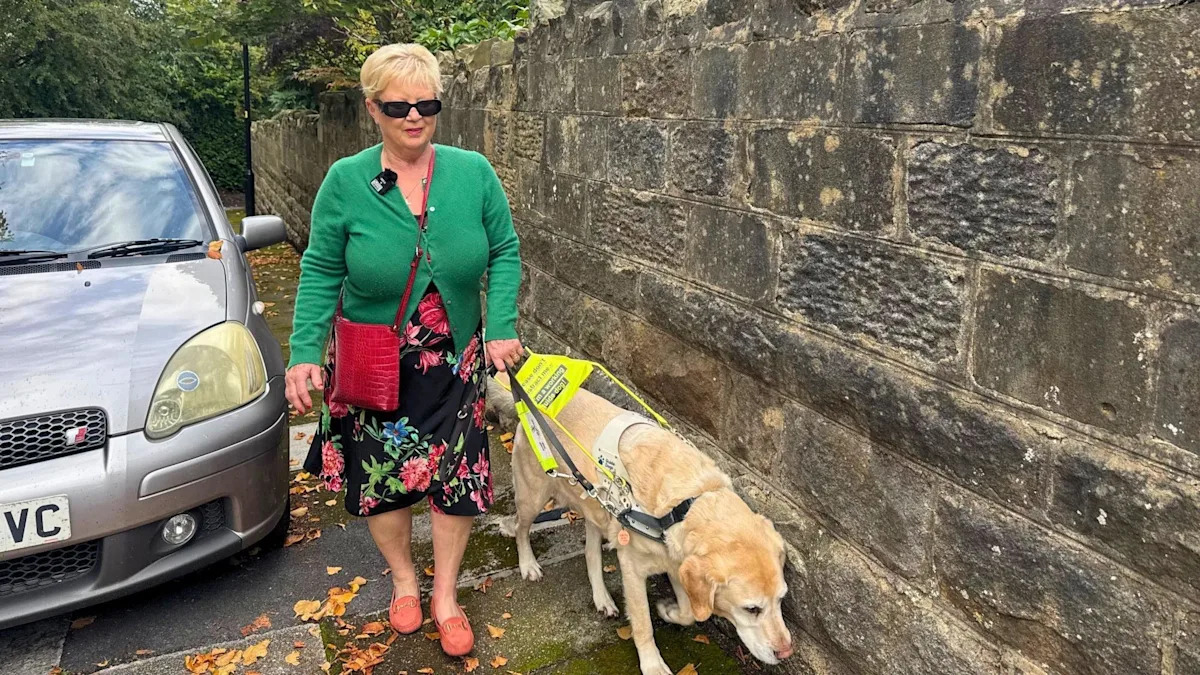Home / Lifestyle / Blind Woman's Harrowing Commute Highlights Pavement Parking Perils
Blind Woman's Harrowing Commute Highlights Pavement Parking Perils
9 Oct
Summary
- Blind woman Kim Murphy lost independence after losing sight 10 years ago
- Guide dog Jango helps Kim navigate, but parked cars block pathways
- Legislation unclear, leaving blind pedestrians at risk of injury

Ten years ago, Kim Murphy lost her sight and says her confidence and independence went along with it. However, applying for a guide dog gave her the chance to live her life again. For the past eight years, Kim's guide dog Jango has helped her go on walks, visit cafes, and find items in her home.
Unfortunately, strolls around Harrogate remain difficult due to parked vehicles blocking pathways. The law is unclear outside of London and Scotland, allowing people to park on the footpaths. This forces Kim and Jango to navigate dangerous obstacles, with the dog sometimes abruptly stopping her or pushing her to the side. Kim worries that if she were using a white cane instead, the risk would be even higher.
The national sight loss charity Guide Dogs is now campaigning for pavement parking to be made illegal, as 84% of local councilors agree it creates safety risks. Kim's harrowing experiences highlight the urgent need for legislative change to ensure visually impaired pedestrians can travel safely in their communities.



